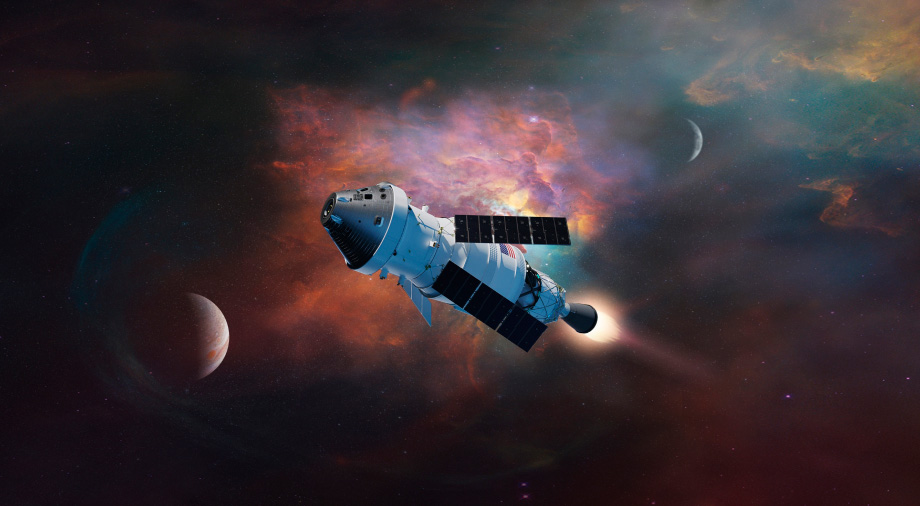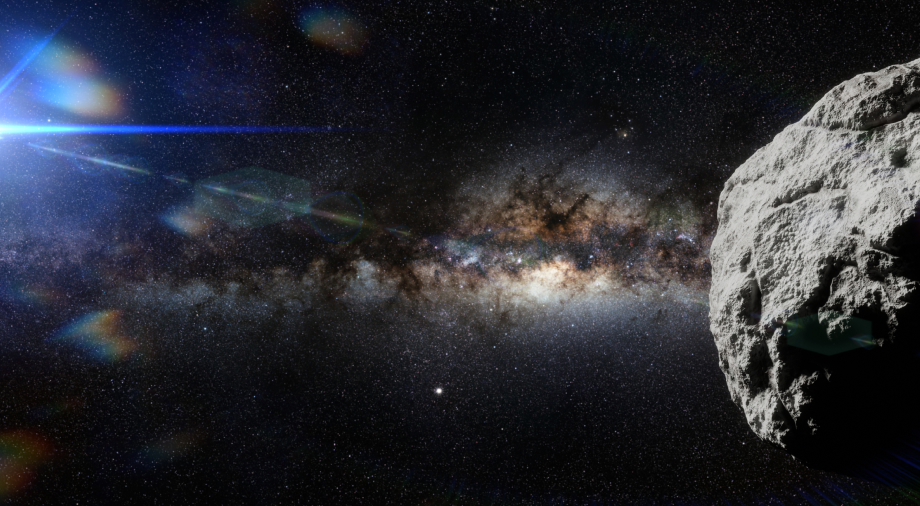Recently, a significant event took place: NASA successfully launched the super-heavy SLS rocket. The US aerospace agency regularly postponed launch dates for the Artemis I mission due to technical issues or bad weather. Yet on Nov. 16, 2022, the giant Space Launch System rocket went into space, opening a string of six planned Artemis missions, including a human-crewed mission and a moon landing.
So it’s a good time to look back at the rather tangled history of its emergence.
The rise and fall of Constellation
February 1, 2003, became one of the most dramatic days in NASA history when the organization lost the Columbia shuttle with seven astronauts. The catastrophe led to a temporary cessation of reusable space shuttle flights and raised a legitimate question: what next?
Yes, NASA still had three shuttles left at its disposal, but you have to understand they were a product of 1970s technology, with all the consequences. Some anecdotes exist about NASA employees scavenging junk yards in the noughties for obsolete electronic components (such as Intel 8086 processors and 8″ diskettes), which were still being used in the shuttle systems. As the loss of Columbia demonstrated, despite all the measures taken after the Challenger disaster, flying the shuttles was still very risky for the crews. All this meant it was time for America to say goodbye to the shuttles and build something to replace them.
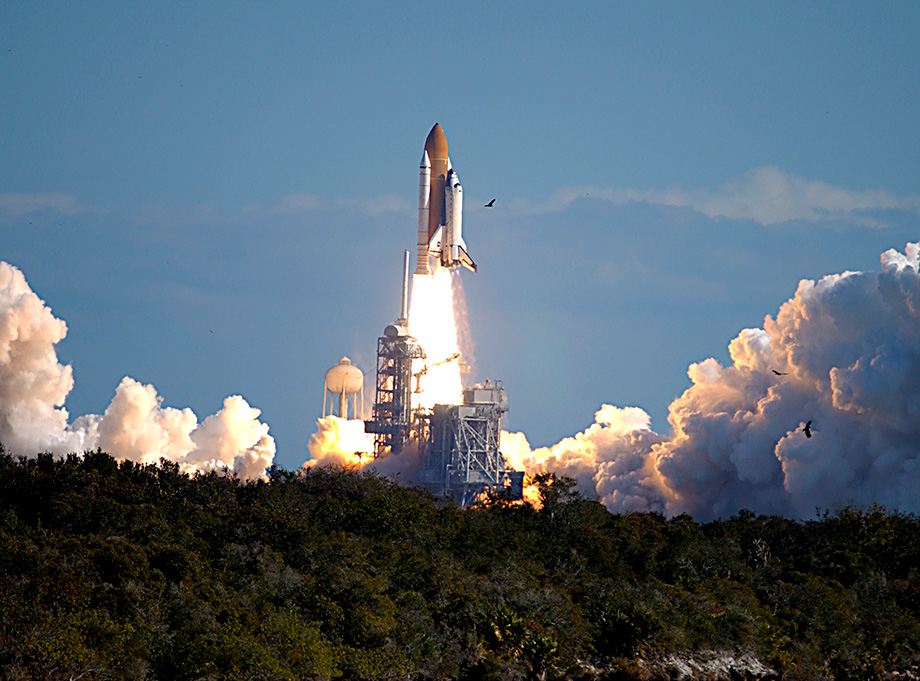
In January 2004, President George W. Bush announced a new manned program called Constellation. In simplest terms, it could be described as an attempt to repeat the Apollo program. Constellation was to build a new capsule spacecraft called Orion and a line of launchers called Ares. Orion was designed to both bring astronauts aboard the ISS and for human-crewed missions into deep space – to the Moon and Mars. For its launches into near-Earth orbit, they were going to use the heavy rocket Ares I. For flights beyond its limits, the super-heavy Ares V was used, which would have surpassed the legendary Saturn V by its parameters.
As for time limits, NASA was to continue operating the shuttles until 2010, aiming to complete the ISS assembly. This was to be followed by a four-year break, during which American astronauts would travel to the ISS on Russian Soyuz. The first Orion flight was scheduled for 2014, and the return to the Moon was to take place no later than 2020.
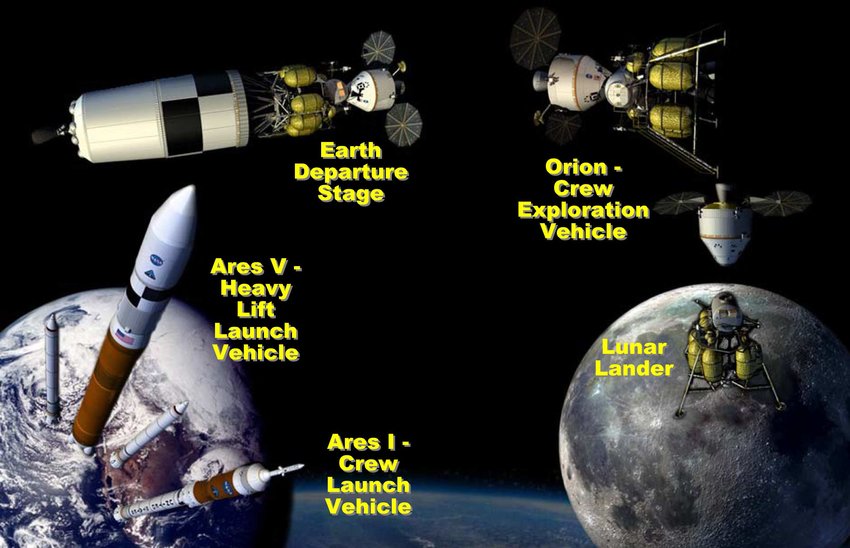
Initially, things looked good. Lockheed Martin received the contract to build Orion, while Alliant Techsystems and Boeing were responsible for building Ares I. However, it quickly became clear that Constellation would hardly be the basis for a new Apollo. The program’s implementation was estimated at $230 billion – and the US Congress has traditionally been reluctant to allocate such an impressive amount for space. Because of the lack of financing, the terms of Constellation implementation were steadily shifting. Then, the world economic crisis of 2008 followed, and the USA did not care about the Moon.
Then the new administration of Barack Obama, which came to power in the United States, created a special commission to conduct an audit of Constellation. The results were very disappointing. The auditors concluded that the program had already managed to go over the budget, was significantly behind schedule, and, even worse, had no clear goals. As a result, in early 2010, Obama announced his decision to close Constellation. During the six years of the program’s existence, it launched just one project – a suborbital test of the Ares I first-stage prototype.
At a crossroads
The cancellation of Constellation provoked a real space crisis in the United States. The shuttles had only a few flights left before they retired, after which the only superpower would no longer be able to launch people into orbit on its own. To solve the problem, the Obama administration took a somewhat brave step, deciding to entrust private spacecraft with the task of delivering US astronauts to the ISS.
Consequently, this initiative was met with a mixed reception. On the one hand, many experts and politicians were wary of the capabilities of private spacecraft. Even though at that time, SpaceX had already managed to conduct a successful orbital test of a prototype Dragon supply vehicle, it was obvious that manned flights into space would be a much more difficult task. That is, no one could guarantee that the private sector would be able to cope with it.
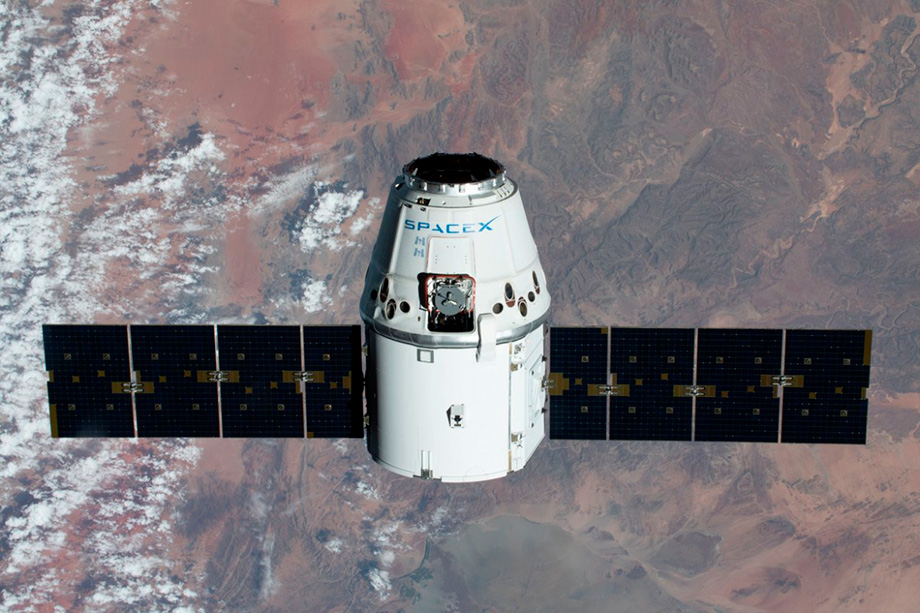
On the other hand, the situation was fueled by the obvious dissatisfaction of major aerospace market players who had received or hoped to receive multi-billion dollar contracts to build equipment for Constellation as they were deprived of this opportunity. Finally, even the use of private ships to take people to the ISS did not provide an answer to the main question: what next? What are America’s long-term goals? So for many people, the cancellation of Constellation looked like a de facto abandonment of US space ambitions and almost the closure of the entire staffed program.
All this could not but provoke a wave of criticism against the US authorities and NASA. Finally, they had to reach a compromise. At first, they announced plans to keep Orion. However, from now on, it was supposed to be used solely for deep-space missions. In 2012, the European Space Agency (ESA) joined the project and agreed to construct the vehicle’s service module.
However, Orion alone did not solve the problem. After all, to send a spacecraft beyond Earth’s orbit, a rocket much more powerful than any of the carriers that existed at the time is required. Soon, a new super-heavy launcher project was born, with the uncomplicated designation of SLS (Space Launch System). It was inferior in performance to the canceled Ares V but still powerful enough to send Orion into deep space. Interestingly, one of the main lobbyists for the project was Senator Bill Nelson, who now heads NASA.
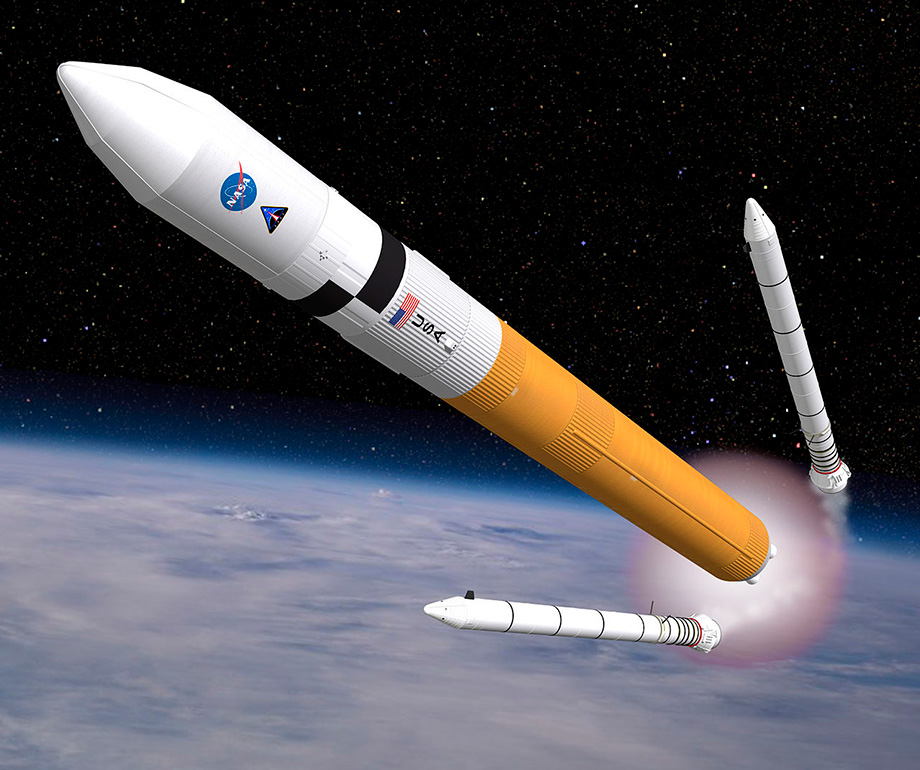
As a result, in 2011, the SLS project was approved by NASA. It received funding from Congress. It was then assumed that the rocket’s first launch would occur in 2017.
Specifications of the SLS
Now let’s talk about what the SLS is. It is the largest rocket NASA has built since the Apollo program. The height of its basic modification (Block 1 version) is 98 m. The launcher consists of two solid-propellant boosters and two stages.
SLS side boosters built by Northrop Grumman are a modified version of the units once installed on the shuttles. The main difference is the number of segments. Gas pedals used for shuttle launches were assembled in four segments, while the new carrier will have five. This will increase their total momentum by 25%. Another significant difference is the lack of reusability. The shuttles had lateral boosters parachuted into the ocean after separation, picked up by ships, and prepared for a new launch. In the case of the SLS, their reuse is not provided.
The first (central) stage of the SLS was created by Boeing. It has four modified RS-25 engines operating on a fuel pair: liquid hydrogen + liquid oxygen. Previously, these power units were also used on shuttles. Each shuttle had three of these engines removed at the end of the flight and moved to the control center for inspection and replacement of necessary components. Since the SLS design does not provide for the return of the first stage, they will now become disposable.
As for the second (upper) stage, in the first three missions on the SLS, the cryogenic unit DCSS (Delta Cryogenic Second Stage), previously used on the rocket family Delta, will be installed. In this configuration, SLS will be able to carry 95 tons of cargo into low Earth orbit (LEO) and up to 27 tons of cargo on the flight path to the Moon.
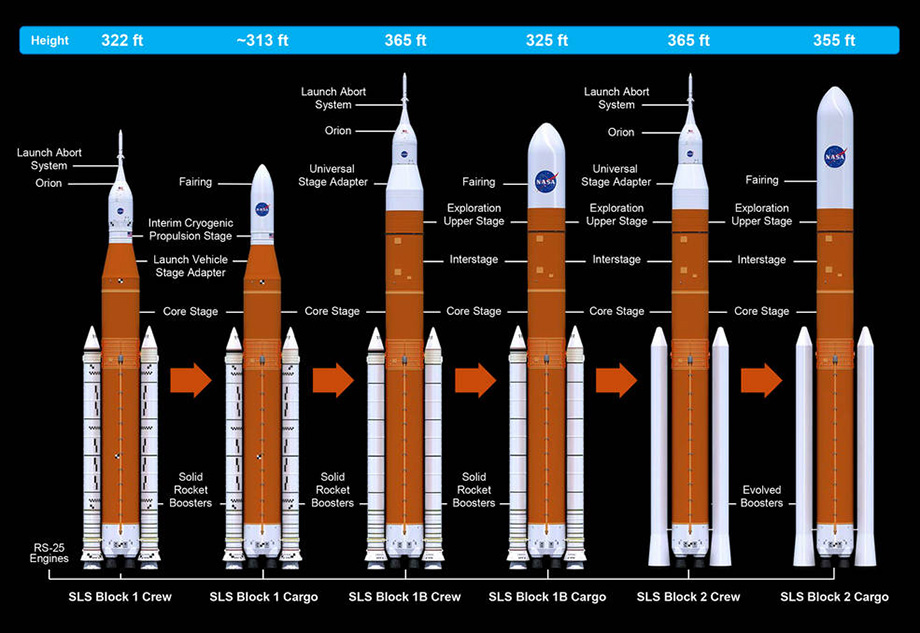
Starting with the fourth mission, the SLS will be upgraded to Block 1B. Instead of the DCSS cryogenic block, it will be equipped with the EUS (Exploration Upper Stage) upper stage, which is being developed by Boeing. It will increase the rocket’s payload capacity to 105 tons in LEO and up to 42 tons to fly to the moon. Later, NASA hopes to make some more changes to the second stage and boosters to make it possible to increase its payload capacity to 130 tons in LEO and to 46 tons during the flight to the Moon.
The Long Road to the Moon
At the time of approval, the SLS had no official target. It was not determined until 2013 when NASA and the White House proposed an ARM project (Asteroid Redirect Mission). In its framework, it was planned to organize a manned expedition to a small asteroid, which would have been previously “dragged” to a lunar orbit using a special tugboat.
It is no secret that the ARM project has never had much “love” in the space community. It seemed to many that the asteroid was too small for a target, both in terms of the resources invested in the SLS and Orion and the general mood of the American space program, used to striving for something big. Nevertheless, NASA has been busy preparing for the mission. It was originally scheduled to launch in 2017. However, quickly enough, the launch date shifted, first to 2020 and then to 2021.
ARM’s hitches were caused by the unreadiness of the SLS and Orion. On paper, one of the new launcher’s main trumps was its active use in its design of components left over from the shuttles. It was believed that this would make the rocket cheaper and speed up its commissioning. However, reality made its adjustments. The production of the first stage of the SLS turned out to be a much more difficult task than anticipated. The main problems with Orion were associated with the service module built by ESA. NASA conducted a successful orbital test of the spacecraft capsule in 2014, while the first copy of the service module was not assembled until 2018.
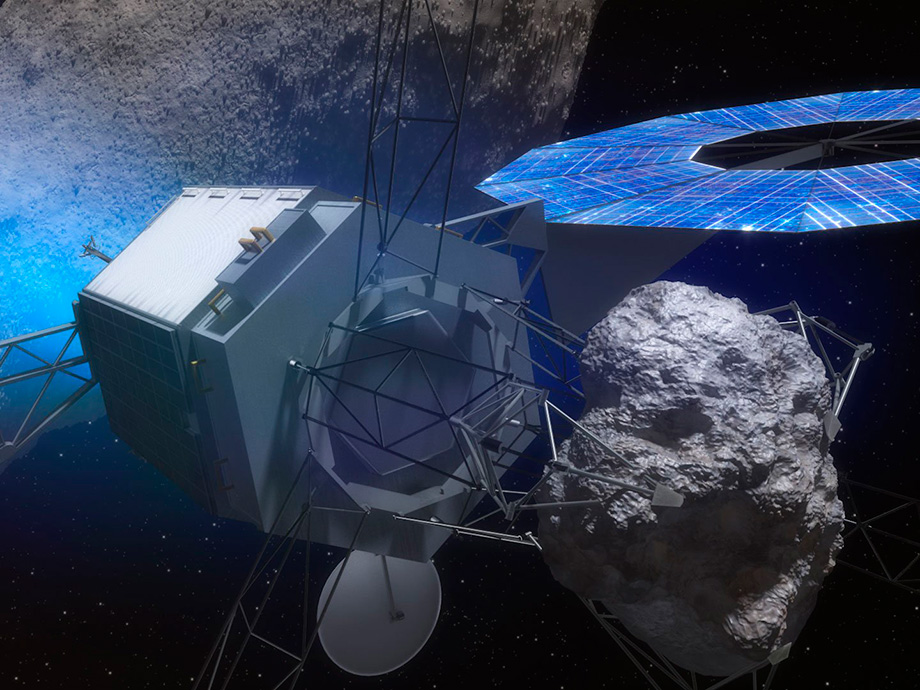
The constant postponements eventually ruined ARM. After the change of power in the United States, Donald Trump’s administration quickly shut down the project that no one particularly liked and returned to its origins. In 2017, the launch of a new manned program was announced, the main goal of which was to return people to the moon. It was called Artemis.
Fortunately, Artemis became more “survivable” than Constellation and ARM. It survived the next change of the White House boss and continued to develop actively. The schedule for the first flights at the moment looks as follows:
- The Artemis I mission, whose main purpose is to test the SLS and Orion (uncrewed), took place in 2022.
- The Artemis II mission is scheduled for 2024. Four astronauts aboard Orion will orbit the Moon without landing on its surface.
- Mission Artemis III is scheduled for 2025. It involves a human-crewed landing at the south pole of the moon.
- Mission Artemis IV will go into space in 2027. It will focus on the assembly of the near-lunar Gateway station. It will also be the first flight using the more powerful SLS Block 1 modification.
NASA’s last rocket?
The SLS is in a rather outstanding position today, being the only NASA-owned rocket. All other US rockets, like the Falcon 9, Atlas V, or Antares, are purchased by the aerospace agency directly from launch operators. Another unusual factor that noticeably distinguishes the SLS from its “counterparts” is the name. More precisely, its absence. Over the past 11 years, NASA has not given the rocket a full-fledged “beautiful” name, limiting itself to a formal abbreviation.
As with almost any major space project, the SLS, of course, has been unable to avoid criticism. The rocket has been criticized for constant delays, budget overruns (as of 2022, about $21 billion had been spent on it), and lack of economy.
Some of this criticism probably makes sense. Indeed, in an era when barge-borne Falcon 9 boosters have long become something of a routine, throwing the first stage with four costly engines into the ocean looks like a waste. However, we should not forget that the creation of the SLS began even before SpaceX announced its plans to build reusable rockets. It is hardly worth recalling with what skepticism they were assessed by the vast majority of experts. So there is not much point in reproaching the SLS designers for not providing the possibility that their colleagues from Europe, China, Japan, and Russia have missed.
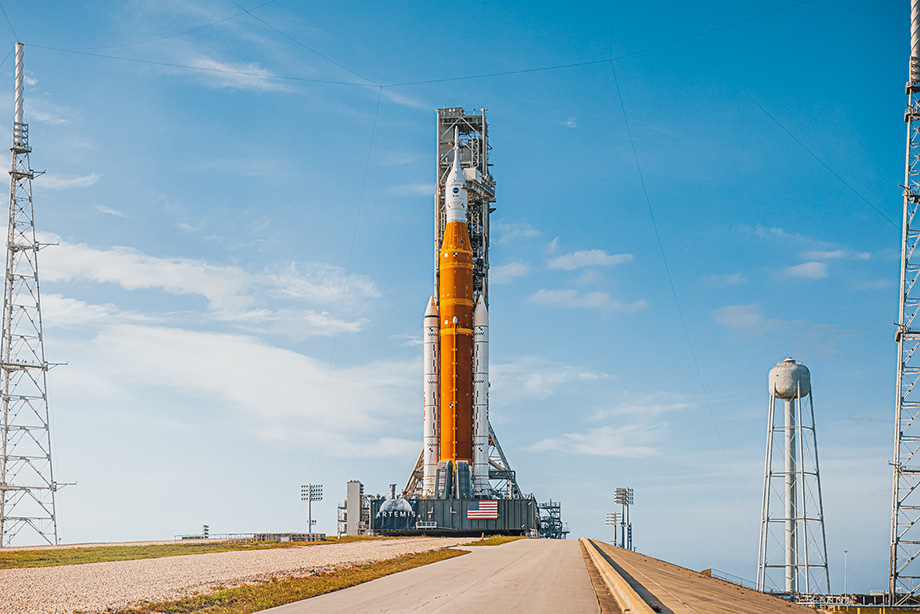
As for the price, the repeated changes in the priorities of the US space program certainly did not have the best effect on the final cost of the SLS. Unfortunately, a rocket can be insured against a failed launch, but it cannot be insured against changes in political priorities. The creation of a system capable of sending people to the Moon has never been and is unlikely to become, an easy task in the foreseeable future (as an illustrative example, consider the challenges and the constant postponement of the first Starship flight).
However, despite all the criticism against it, the SLS is currently the only flight-ready superheavy launcher on the planet. It will probably hold this status for at least a few more years. Yes, it is likely that in the future, NASA will finally abandon the scheme of owning their carriers in favor of ordering them from private companies. Then the SLS will be NASA’s last rocket. Still, even then, it must go down in the annals of world space as the system that helped to bring people back to the Moon. Pretty soon, we will find out how successful it will be in accomplishing this task.



